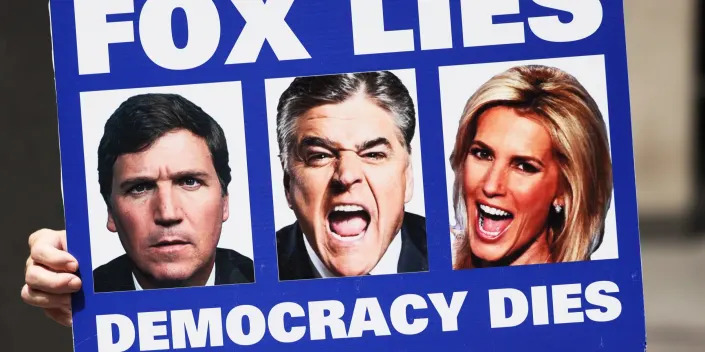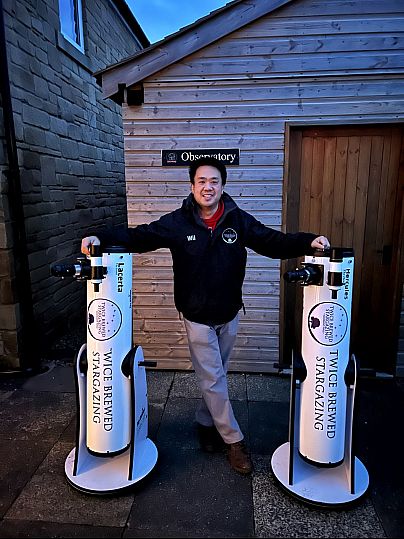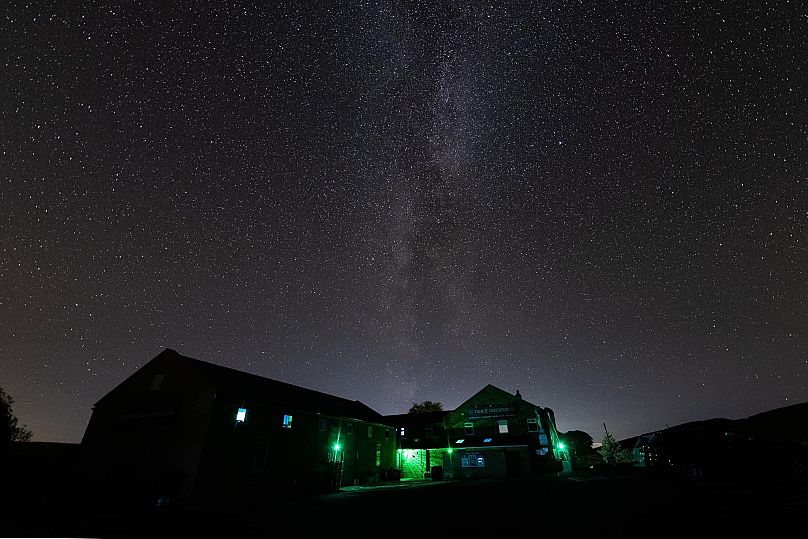SUFFERED IMAGE SLAUGHTER BY REAGAN
Column: Jimmy Carter was an underrated presidentThe easy shorthand about him — lousy president, outstanding former president — is misleading.
Jonathan Alter
Tue, February 21, 2023
President Jimmy Carter at the White House in 1977.
(Library of Congress/Marion S. Trikosko/Handout via Reuters)
One day in Atlanta, I asked Rosalynn Carter if her husband was stubborn. It was a trait that both helped and hurt him as governor of Georgia and president of the United States in the 1970s.
I expected Rosalynn, who has known Jimmy for more than 90 years and been married to him for nearly 77, to try to spin me.
Instead, she just nodded and laughed.
As Jimmy Carter’s epic journey is almost at a close at age 98, it’s a good time to begin a long-overdue reassessment of this misunderstood man and his much-maligned presidency. In researching his life for five years and questioning him closely about it, I was struck by the gap between the perception of his career and the reality of the historical record.
The easy shorthand about him — lousy president, outstanding former president — is misleading. In fact, Carter was an underrated president and a slightly overrated ex-president, in large part because he had much less power after leaving office to change the lives of people around the world.
One day in Atlanta, I asked Rosalynn Carter if her husband was stubborn. It was a trait that both helped and hurt him as governor of Georgia and president of the United States in the 1970s.
I expected Rosalynn, who has known Jimmy for more than 90 years and been married to him for nearly 77, to try to spin me.
Instead, she just nodded and laughed.
As Jimmy Carter’s epic journey is almost at a close at age 98, it’s a good time to begin a long-overdue reassessment of this misunderstood man and his much-maligned presidency. In researching his life for five years and questioning him closely about it, I was struck by the gap between the perception of his career and the reality of the historical record.
The easy shorthand about him — lousy president, outstanding former president — is misleading. In fact, Carter was an underrated president and a slightly overrated ex-president, in large part because he had much less power after leaving office to change the lives of people around the world.
Carter and his running mate, Walter Mondale, at the 1976 Democratic National Convention in New York City. (PhotoQuest/Getty Images)
As president, Carter was a political failure, crushed by Ronald Reagan when he ran for reelection in 1980. But in many areas he was a substantive, even visionary success, far ahead of his time. In one term, he won approval of more major legislation than any president since Franklin Roosevelt, except Lyndon Johnson — more than two-term presidents Ronald Reagan, Bill Clinton, George W. Bush and Barack Obama. (Carter was helped by the fact that his party controlled Congress for his full four years.)
Take the environment. Carter imposed strong new pollution controls and the first fuel-economy standards. He established the Superfund, which has cleaned up thousands of toxic waste dumps across the country. And with the enactment of the Alaska Lands Act, he doubled the size of the national park system. He forged the nation’s first comprehensive energy policy, which included the first federal funding for green energy. To symbolize this change, Carter in 1979 placed solar panels on the roof of the White House, which were later taken down by Reagan.
Shortly before Carter left office, the White House issued a report on global warming with the same carbon emission goals as were adopted 35 years later at the 2015 Paris Climate Accords. If reelected, he had planned to have electric cars on the road by the mid-1980s.
Elsewhere on the domestic side, Carter carried out the first civil service reform in 100 years. He established two new Cabinet departments (Energy and Education) and FEMA. He signed the major ethics legislation that made Donald Trump’s first impeachment possible. He deregulated airlines (which allowed for cheaper fares on major routes), trucking (which spurred the just-in-time delivery that undergirds the economy) and utilities (incentivizing them to use clean energy). He curbed redlining, which had impoverished broad swaths of urban America. He brought the first genuine diversity to the federal workforce and appointed more women and African Americans to the federal bench than all of his predecessors combined, times five, though he never had a Supreme Court appointment.
Ruth Bader Ginsburg, whom he appointed to the appellate court, later said: “People often ask me, ‘Well, did you always want to be a judge?’ My answer is that it just wasn’t in the realm of the possible until Jimmy Carter became president and was determined to draw on the talent of all of the people, not just some of them.”
Carter with Egyptian President Anwar Sadat and Israeli Prime Minister Menachem Begin during the signing of the Camp David Accords in the White House in 1978.
(Jimmy Carter Library/National Archives/Handout via Reuters)
In foreign policy, Carter is most remembered for the humiliation of the Iran hostage crisis, which, along with high interest rates and inflation and an intraparty challenge for the Democratic nomination from Ted Kennedy, led to his defeat in 1980.
But the crisis didn’t end badly — the hostages all came home safely just as Carter left office — and much of the rest of Carter’s foreign policy was historic.
The 1978 Camp David Accords, made possible by his much-derided attention to detail, is arguably the most successful peace treaty since the end of World War II. Israel and Egypt fought four wars in the previous 30 years but have not fired a shot in anger against each other in the four decades since.
Richard Nixon opened the door to China, but Carter walked through it. By establishing full diplomatic relations with China (which Gerald Ford, his 1976 opponent, would likely not have been able to do), Carter launched the world’s most crucial bilateral relationship and made possible, for better or worse, the growth of the global economy.
In the face of fierce opposition, Carter won approval of the Panama Canal Treaties, which prevented — by the Pentagon’s estimate — the deployment of 100,000 troops to protect the Canal Zone in what would have been a Vietnam War-style conflict in the Western Hemisphere.
In foreign policy, Carter is most remembered for the humiliation of the Iran hostage crisis, which, along with high interest rates and inflation and an intraparty challenge for the Democratic nomination from Ted Kennedy, led to his defeat in 1980.
But the crisis didn’t end badly — the hostages all came home safely just as Carter left office — and much of the rest of Carter’s foreign policy was historic.
The 1978 Camp David Accords, made possible by his much-derided attention to detail, is arguably the most successful peace treaty since the end of World War II. Israel and Egypt fought four wars in the previous 30 years but have not fired a shot in anger against each other in the four decades since.
Richard Nixon opened the door to China, but Carter walked through it. By establishing full diplomatic relations with China (which Gerald Ford, his 1976 opponent, would likely not have been able to do), Carter launched the world’s most crucial bilateral relationship and made possible, for better or worse, the growth of the global economy.
In the face of fierce opposition, Carter won approval of the Panama Canal Treaties, which prevented — by the Pentagon’s estimate — the deployment of 100,000 troops to protect the Canal Zone in what would have been a Vietnam War-style conflict in the Western Hemisphere.
Carter and his wife, Rosalynn, at a 2019 basketball game between the Atlanta Hawks and the New York Knicks. (Dale Zanine/USA Today Sports via Reuters)
Perhaps most important, Carter’s human rights policy, while hypocritical in some respects, set a new global standard for how governments should treat their own people, helped dozens of nations establish democracies and — by the account of many Republicans — used soft power to help win the Cold War.
Carter made plenty of mistakes as president. His stubbornness harmed efforts to achieve health care reform. He let the Shah of Iran into the U.S. for medical treatment, which precipitated the seizure of the hostages at the U.S. Embassy in Tehran. He imposed a grain embargo and boycott of the 1980 Olympics in an unpopular and ineffective response to the Soviet invasion of Afghanistan. And he mismanaged his relationships inside the Democratic Party.
But most of the criticism of his presidency is, in hindsight, overblown. Now that his long life approaching its end, it’s time to begin the overdue assessment of an honest and decent man who was a better president than most remember.
Jonathan Alter is the author of “His Very Best: Jimmy Carter, a Life.”














